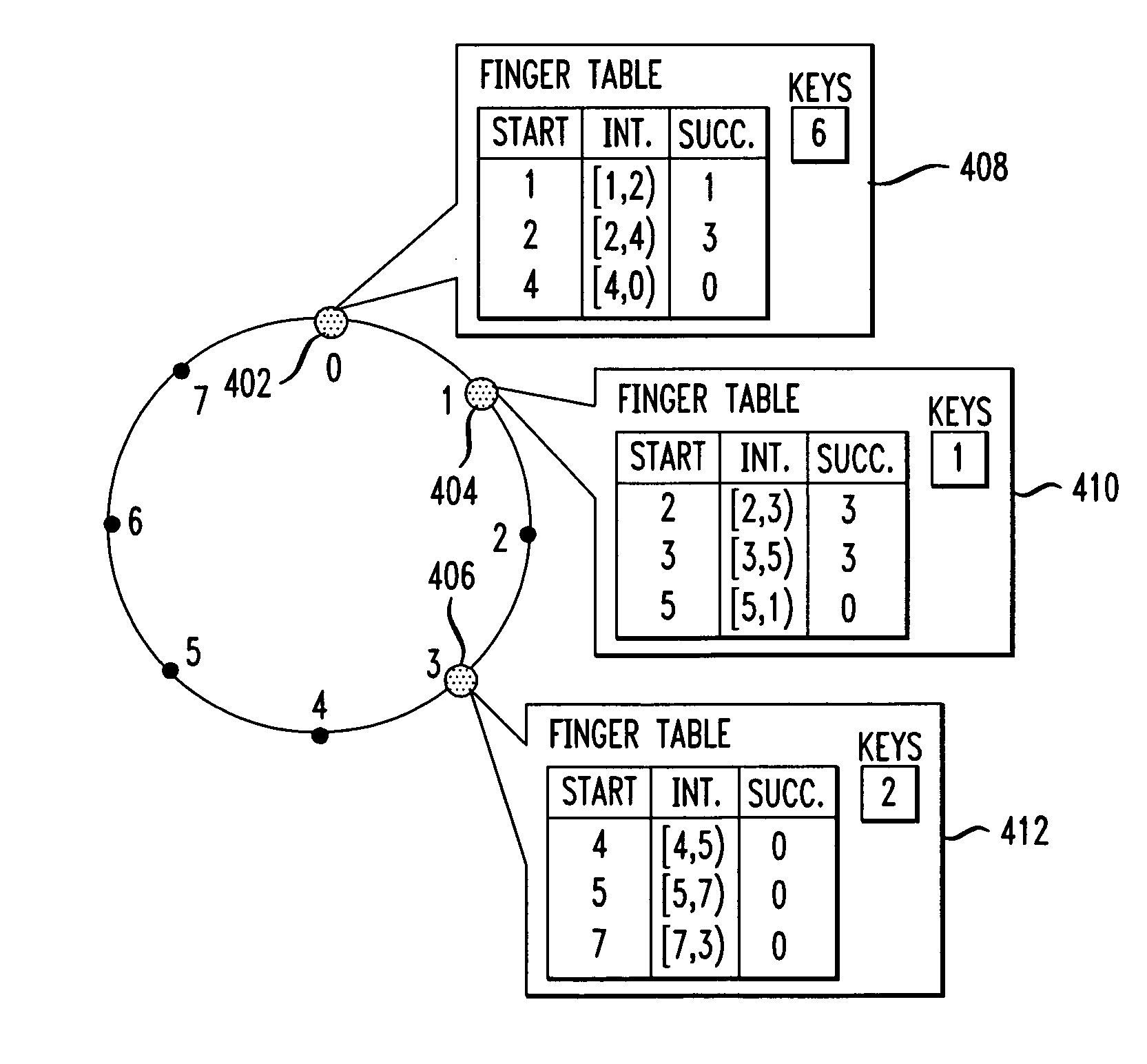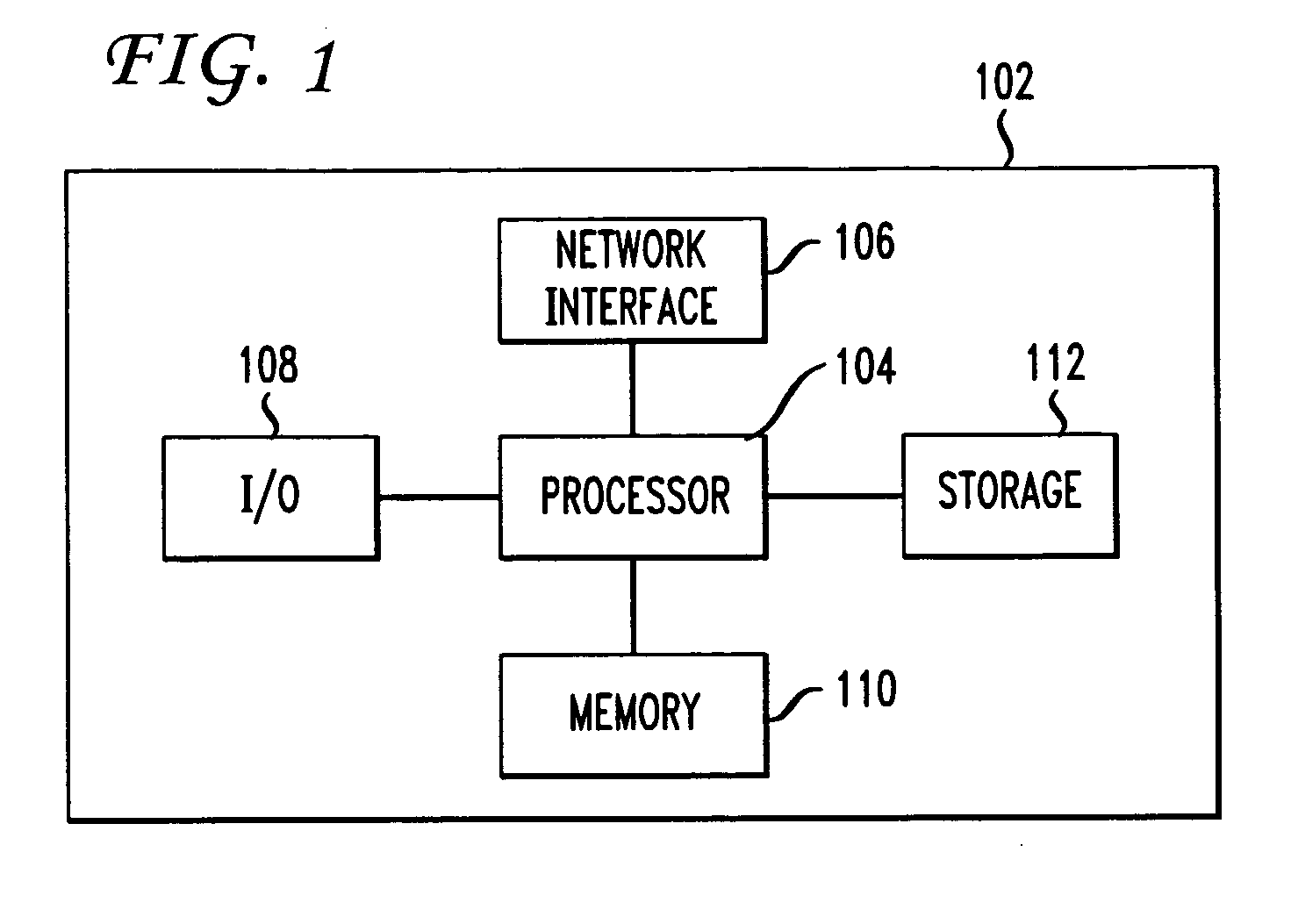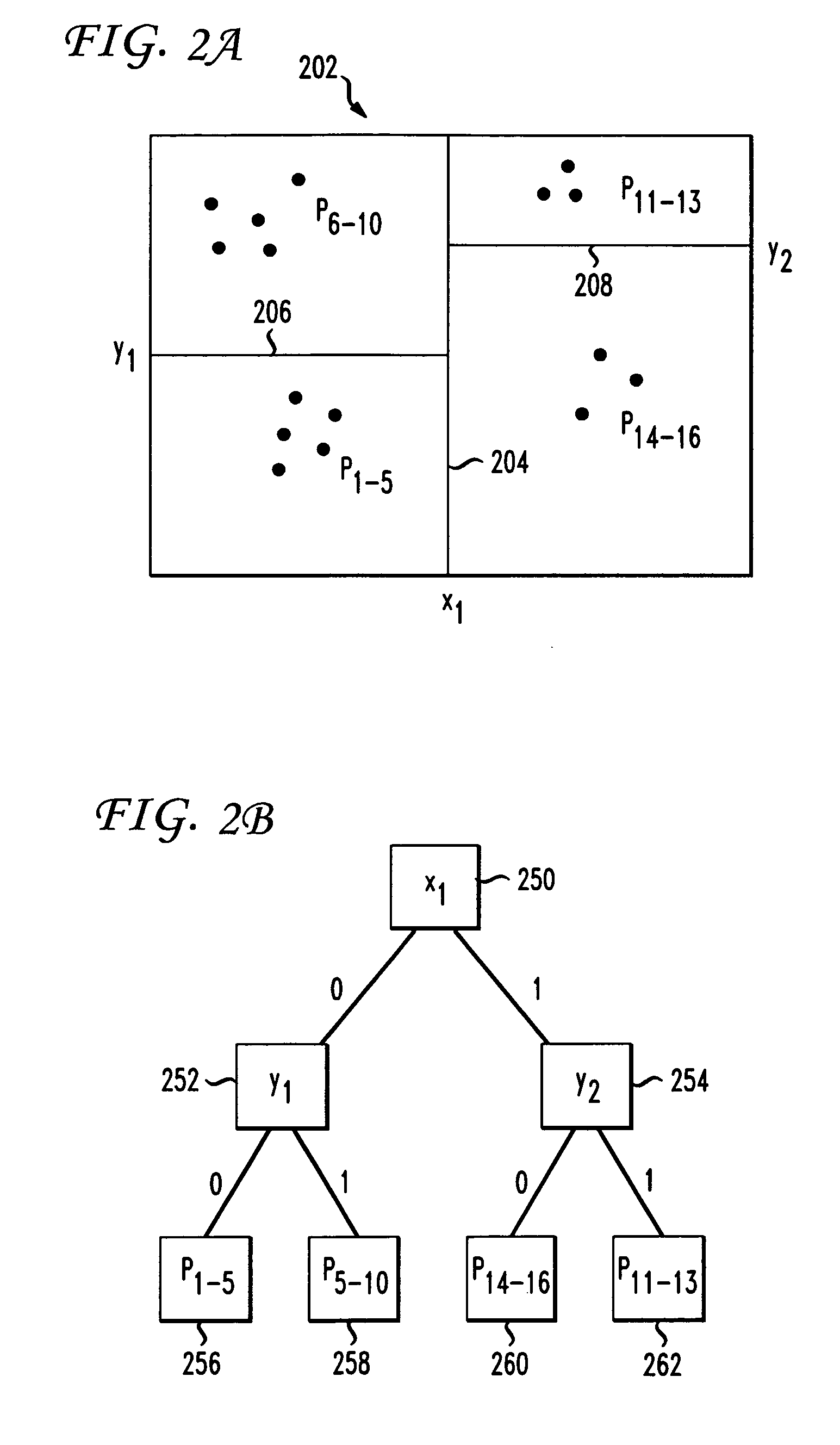Method and apparatus for distributed indexing
- Summary
- Abstract
- Description
- Claims
- Application Information
AI Technical Summary
Benefits of technology
Problems solved by technology
Method used
Image
Examples
first embodiment
[0047] A first embodiment, referred to as tree replication, replicates the logical index tree in its entirety. In this embodiment, certain ones of the physical nodes contain replicas of the entire logical index data structure. Any search operation requiring access to the index must first reach one of these nodes replicating the index tree in order to access the index and find which physical nodes contain the leaves corresponding to the requested range. Note that in the context of grid computing resource brokering, only one point (physical resource) which lies within the query range (resource attribute constraints) needs to be found. Thus, unlike traditional range queries which retrieve all data points that fall within the range, in resource brokering only one such data point needs to be located.
[0048] Analysis shows that to achieve load scalability, the number of index replicas should be O(N), where N is the total number of nodes in the network. Assuming that, on average, each node ...
second embodiment
[0051] replication is referred to as path caching. In this embodiment each physical node has a partial view of the logical index tree. This path caching technique constructs a single logical index tree and performs replication at the physical level as follows.
[0052] Consider the logical index tree shown in FIG. 6. Each tree node is assigned a unique identifier (i.e., label) using the above described naming technique. Root node 602 has label 0. Internal nodes 604 and 606 have labels 00 and 01 respectively. Leaf nodes 608, 610, 612 and 614 have labels 000, 001, 010 and 011 respectively. Each of the logical index nodes are mapped to physical nodes. FIG. 6 shows this mapping of logical index nodes to physical nodes using broken lines. Thus, for example, root node 602 is mapped to physical node 662. Internal nodes 604 and 606 are mapped to physical nodes 652 and 658 respectively. Leaf nodes 608, 610, 612 and 614 are mapped to physical nodes 650, 660, 656 and 654 respectively. Each logica...
third embodiment
[0059] In accordance with a third embodiment, a node replication technique is used to replicate each internal node explicitly. In accordance with this technique, the node replication is done at the logical level itself. In this embodiment the number of replicas of any given logical node is proportional to the number of the node's leaf descendants. Thus, the root node will have N replicas (where N equals the number of leaf nodes) while each leaf node has only one replica. Stated another way, a node at tree level k will have N / 2k replicas.
[0060]FIG. 7(a) shows a general representation of this embodiment. The filled triangle 702 represents the logical index tree, and the dashed triangle 704 represents the corresponding replication graph. The shape of 704 illustrates the degree of replication for each level of the search tree (i.e., N / 2k replicas at level k).
[0061]FIG. 7(b) is a graphical illustration showing how the replication graph evolves as the logical index tree expands. Note tha...
PUM
 Login to View More
Login to View More Abstract
Description
Claims
Application Information
 Login to View More
Login to View More - R&D
- Intellectual Property
- Life Sciences
- Materials
- Tech Scout
- Unparalleled Data Quality
- Higher Quality Content
- 60% Fewer Hallucinations
Browse by: Latest US Patents, China's latest patents, Technical Efficacy Thesaurus, Application Domain, Technology Topic, Popular Technical Reports.
© 2025 PatSnap. All rights reserved.Legal|Privacy policy|Modern Slavery Act Transparency Statement|Sitemap|About US| Contact US: help@patsnap.com



